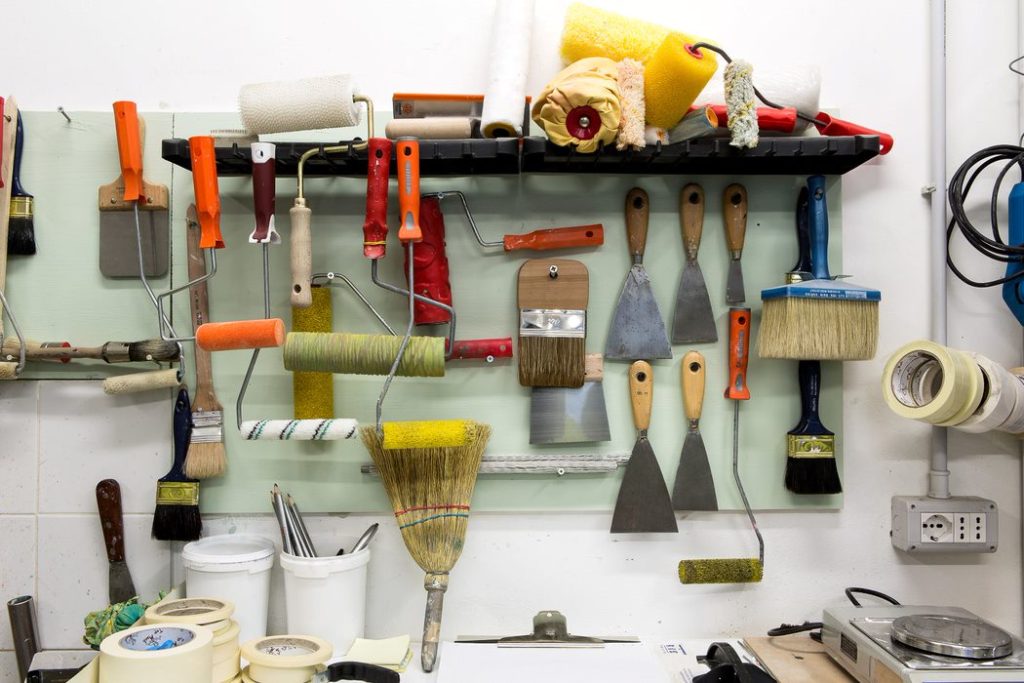The support plays a substantial role in the successful outcome of any application cycle. Starting a decoration cycle on a suitable wall, in good health and free of defects, is important for the success and durability of the application of any decorative product. Therefore, it is important to know the nature of the support, assess its state of conservation, and intervene preventively where necessary.
Our technical office and customer service are always available to Viero Decoratives partners to assist, support, and provide all the necessary guidance to execute high-quality decorations from both a technical and aesthetic point of view.
Francesco Papini, specialist in product technical service, discusses in this article an important topic that often does not find space in the technical manual of products, but is nevertheless fundamental for the technical success of a decoration: support analysis.

Here you will find a list of 5 tips to follow before starting any application cycle, particularly focusing on the preventive analysis of the base. ‘In general,’ Papini explains, ‘for the success of a cycle, before handling any product or tool, a professional decorator must verify the state of conservation and the mechanical characteristics of the bases they will work on.’
Below you will find five factors to pay attention to before applying decorative finishes to the support. This is obviously a non-exhaustive list but useful for a first check.
Check adhesion to the wall support and its mechanical resistances
- Before applying a decorative product to a support, you must ensure its adhesion. To check the adhesion of the wall support, you can use a hammer, preferably a rubber one. If the plaster sounds hollow, it means it is detached from the support. If instead the noise is not hollow, it means it is well anchored. Alternatively, to achieve the same result, you can tap the wall with other rigid objects.
- It is also important to check mechanical resistances. This analysis particularly concerns plaster. Mechanical resistance is one of the most relevant indicators regarding the state of conservation of a plaster and must therefore be clarified before undertaking any restoration action. You can use any tapered tool such as a screwdriver or a nail, pressing its tip on the plaster. If the tip fails to scratch the surface, the plaster can be considered consistent and well cohesive. If it penetrates slightly, it can be considered recoverable. If, on the other hand, the tool penetrates deeply with just a slight pressure, you should carefully evaluate the choice of compatible cycles or any restorations.
Analyse the state of deterioration of the plaster
Before applying any decorative product, you must always check the deterioration of the plaster. In general, we can talk about three main types of plaster deterioration.
- Rising damp: in the presence of rising damp in the support, it is necessary to take suitable technical action aimed at containing or, even better, solving the problem. You cannot just ‘mask’ the phenomenon since it would reappear shortly, nullifying the work.
- Presence of spiderweb cracks: mainly caused by plaster shrinkage due to rapid water loss (evaporation) inside it, spiderweb cracks can also occur if the applied plaster is too ‘poor’, meaning it is not properly mixed in the right proportions of water, sand, and binder. Recognizing the nature and extent of the spiderweb cracks is important for choosing the appropriate finishing cycle. The initial distinction to be made is between spiderweb cracks and linear cracks/lesions. For the latter type, it is essential to verify their origin to ensure they do not conceal more serious structural problems. Almost always, the cracks that appear on the finish are transmitted to the surface by the underlying plaster. To verify this, simply scrape the finish and check if the lesion continues into the support.
- Linear lesions: these are induced by movements of the load-bearing structure. They can be acyclic – due to the settlement of the building (e.g., foundations, bending of concrete structures) – or cyclical, affecting the parts of the building that undergo different expansions depending on the seasonal heating cycle (e.g., columns or beams in concrete and masonry cladding). Before working on acyclic lesions, a careful analysis is required, as they could be a sign of structural problems. Cyclical lesions, on the other hand, do not represent a problem in this regard and can be adequately treated.
Check supports characterized by old paints or decorative coatings
When working on supports characterized by old paints or decorative coatings, before proceeding with the decoration, it is advisable to carry out various checks to pre-emptively identify some critical issues such as delamination or dusting.
Ensure there is no mould contamination on the support
Before applying, it is necessary to ensure that there is no mould on the support. The presence of mould is always accompanied by water accumulation (also in the form of condensation) in the support. Water accumulation can be facilitated by particularly heavy exposures, the presence of thermal bridges, condensation due to excessive humidity, poor ventilation of the rooms, the presence of many indoor plants, water infiltrations from broken pipes, wardrobes too close to the walls, inoculation of spores carried by the wind.
All these phenomena must be treated with specific products, such as sanitizing and disinfecting solutions, both for cleaning the support, an operation that should always be carried out beforehand, and for the subsequent repainting. To avoid other kinds of problems, it is not advisable to use non-specific sanitizing solutions, like bleach, as they are ineffective.
Check the uniformity of the support and test the substrate absorption
- Patches are partial reconstructions of the plaster. It is fundamental that the material used to make them is chemically and mechanically compatible with the existing one. We must always keep in mind that the thinner the chosen finishing product, the more the differences in grain will be highlighted. Any differences in absorption may result in different colour development and must be corrected in advance by adopting specific cycles to standardize absorption. It is very important to respect the curing times indicated by the manufacturer of the mortars used to carry out the repairs, which must always be carried out regardless of how extensive the repair is.
- Checking the absorption of the substrate is important for multiple reasons. All application cycles require that the base be absorbent in the correct manner, or alternatively adequately treated with specific primers, to allow the binder to go through the support, developing optimal adhesion. With the exception of mineral products, such as lime and silicates, all other products require that the support absorbs uniformly for the correct development of the colour characteristics; this is why it is crucial to verify absorption on the entire surface, intervening appropriately in case of poor uniformity.
Have doubts? Contact our experts!
The ones listed in this article are just some of the checks that a decorator must perform or have performed on the support before starting a new decorative cycle. If you have any doubt or question, contact us. Our technicians and our customer service will support you and provide you with the best guidance to artfully create your wall decorations.




